Table of Contents
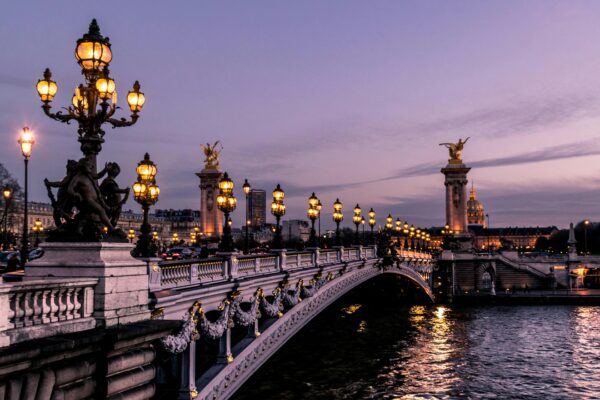
Planning a Europe trip is a dream shared by countless Indian travelers, often seen as a symbol of exploring culture, history, and breathtaking landscapes beyond borders. However, the perception that traveling to Europe is expensive and only feasible for the well-off has kept this dream on the back burner for many. That’s where smart budgeting and meticulous planning come in.
With the right approach, it is entirely possible to undertake a 7-day Europe trip under ₹1 lakh—including flights, accommodation, food, sightseeing, and even shopping. The key lies in selecting destinations that are inherently more affordable, leveraging deals, traveling smart, and prioritizing experiences over luxury. By being flexible with travel dates, booking early, and understanding the European travel landscape, one can significantly cut down costs without compromising on the experience.
Europe offers a treasure trove of diverse cultures, iconic architecture, and natural beauty. From cobbled streets and Gothic cathedrals to scenic countryside and lively town squares, the continent provides an unforgettable mix of experiences. But it doesn’t have to be Paris or Rome to enjoy Europe. Many lesser-known yet equally charming cities offer immersive travel experiences at a fraction of the cost.
So if you’re looking to plan a budget Europe trip for Indians that doesn’t burn a hole in your pocket, you’re in the right place. This guide is tailored specifically for Indian travelers aiming to explore Europe without overspending. Through this blog, you’ll discover not only how to save money but also how to maximize your time and experiences across multiple countries.
With proper planning, you can fly to Europe, explore multiple cities, and return home with a suitcase full of memories—all within a modest budget of ₹1 lakh. We’ll break down each major component of travel: where to go, how to get there, where to stay, what to eat, and how to travel within Europe on a budget. You’ll also find tips on what to pack, how to exchange currency smartly, and what activities to prioritize. Whether you’re a student, a young professional, or even a family looking to travel economically, this comprehensive guide is your roadmap to planning a fantastic, affordable European getaway. So buckle up, and let’s start planning your 7-day Europe itinerary under 1 lakh today.

1. Choosing the Right Countries in Europe
Europe is a continent brimming with history, art, and culture, but not all countries offer the same experience when it comes to budgeting. Western Europe, with its iconic cities like Paris, London, and Rome, often comes with a heavy price tag that can quickly exhaust your 1 lakh budget.
That’s why focusing on Central and Eastern European countries is the smarter move when planning a Europe trip under ₹1 lakh. Countries like Hungary, Poland, the Czech Republic, and Slovakia offer a similar charm and architectural beauty, often at half the cost. These regions have a rich cultural tapestry and offer vibrant cities, stunning natural landscapes, and deep-rooted traditions that make for a memorable experience.
Among the best choices, Budapest stands out for its breathtaking views of the Danube, its historic thermal baths, and an eclectic mix of old-world charm and modern nightlife. Prague, often called the “City of a Hundred Spires,” is another excellent option, with its well-preserved medieval old town and the iconic Charles Bridge. Krakow in Poland is not just affordable but also incredibly rich in history and hospitality.
These cities not only offer cheaper accommodations and meals but also have a variety of free or low-cost tourist attractions, making them ideal for budget-conscious travelers looking to plan a 7-day Europe itinerary under 1 lakh.
Travelers often overlook these gems in favor of more mainstream locations, but that’s precisely why they remain affordable. Tourism infrastructure in these countries is well-developed, and they are increasingly catering to international tourists, especially from countries like India. In addition, most locals speak basic English, which eases communication and helps first-time travelers navigate their way comfortably.
Visa processes are also relatively smooth, especially for Schengen visas that allow you to travel across multiple European countries with a single permit. For a true cultural experience on a budget, these destinations should be at the top of your list.
So when planning your Europe trip cost from India in rupees, make sure your itinerary includes at least one or two of these budget-friendly destinations. Not only will you save a considerable amount of money, but you’ll also gain a richer, more immersive travel experience.
These countries allow you to stretch your budget without sacrificing the joy and wonder that Europe has to offer. In fact, you might find the experiences here even more authentic and enjoyable due to the lower tourist traffic and a more relaxed pace. Your 7-day journey will be filled with beautiful memories, all without stepping out of your financial comfort zone.
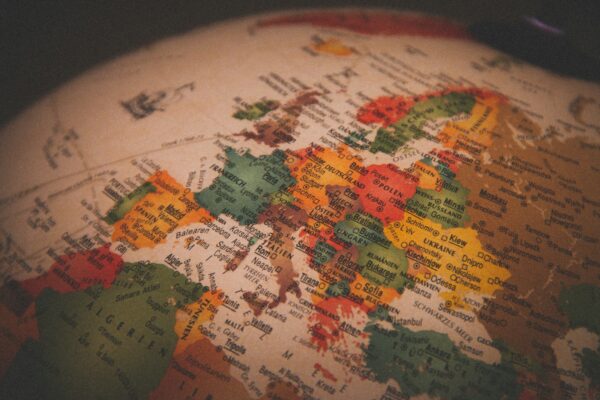
2. Cheapest Flights to Europe from India
One of the most significant expenses for any international trip is the cost of flights, and Europe is no exception. However, finding cheap flights to Europe from India is possible with the right approach, and it can make or break your 7-day Europe trip under ₹1 lakh.
The key to securing affordable flights for the Europe trip lies in booking at the right time, being flexible with your travel dates, and knowing which airlines and routes are the most budget-friendly. Let’s break down the strategies to save money on flights to Europe.
The best time to book flights to Europe is at least 3 to 6 months in advance. Airlines typically offer discounts and lower fares during this period, and the earlier you book, the more likely you are to snag a great deal. If you can be flexible with your departure dates, you’ll have a better chance of finding cheaper flights.
Avoid peak seasons like summer (June to August) and major holidays, as these times are when flights tend to be the most expensive. Instead, consider traveling in the off-peak months like September to November or February to April, when flights are generally more affordable.
Another tip is to fly to less popular airports. Major European cities like Paris, London, and Rome are always in high demand, making flights to these destinations more expensive. Consider flying to alternative airports that are located outside the city center but still well-connected by public transport.
For example, flying into airports like Bergamo (near Milan), Beauvais (near Paris), or Eindhoven (near Amsterdam) can save you a significant amount of money. While these airports may be farther from the city, the cost of transportation to the city center is often low, and you’ll be able to keep your travel budget intact.
You can also consider booking a multi-stop flight or an open-jaw flight (flying into one city and out of another) to further reduce the cost.These flights can sometimes be cheaper than booking a round-trip flight to the same destination.
Another great strategy is to use flight comparison websites like Skyscanner, Google Flights, and Kayak to compare prices across different airlines and booking platforms. These tools allow you to track fare trends and find the best possible deals, ensuring you get the lowest price available.
In addition, budget airlines like Ryanair, EasyJet, and Wizz Air offer affordable flights within Europe once you’ve arrived, making it easy to explore multiple countries without spending a fortune on transportation.
To take advantage of these low-cost carriers, you may want to consider flying to a major hub like London, Barcelona, or Milan and then using a budget airline to visit other European cities. When using these budget airlines, be mindful of additional fees like baggage charges and seat selection fees, which can add up if you’re not careful.
To further reduce your overall flight costs, consider traveling during weekdays instead of weekends. Mid-week flights, especially on Tuesdays and Wednesdays, are often cheaper than weekend departures. The flexibility of adjusting your travel schedule by a few days can result in significant savings, allowing you to allocate more of your budget to other aspects of your trip. By following these tips and being strategic with your flight planning, you can reduce one of the largest expenses of your trip and keep your Europe adventure under ₹1 lakh.
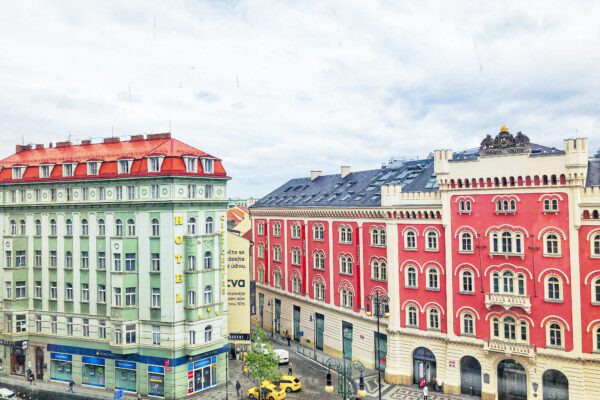
3. Budget Accommodation in Europe
Accommodation is one of the primary expenses when planning your Europe trip, but with some careful planning, it’s possible to find budget-friendly lodging that fits into your 7-day Europe trip under ₹1 lakh. Europe offers a wide variety of accommodation options that cater to every budget, from luxury hotels to budget hostels and everything in between. However, finding the right balance between affordability and comfort is crucial for staying within your budget.
One of the most cost-effective ways to stay in Europe is by booking hostels. Hostels are typically far cheaper than hotels, and many of them offer more than just basic amenities. Most European hostels have private rooms as well as dormitory-style accommodations, which makes them a great option for solo travelers, groups, or families.
They also provide opportunities to meet fellow travelers, which can enrich your experience. In popular cities like Prague, Budapest, and Krakow, you can find great hostels with excellent reviews that offer both affordability and comfort. Websites like Hostelworld and Booking.com are great resources for finding the best hostel deals.
For those looking for more privacy or staying in a group, budget hotels and guesthouses are a solid option. These typically offer more space and comfort than hostels, but they are still very affordable, especially if you book in advance. Many guesthouses and budget hotels provide essential amenities such as free Wi-Fi, breakfast, and private bathrooms at reasonable rates.
When booking these, it’s crucial to compare prices on multiple platforms like Expedia, Agoda, or Booking.com to ensure you get the best deal. The price can vary greatly depending on the location, so booking well in advance is essential, especially if you are traveling during a busier season.
Another option to consider is staying with locals through platforms like Airbnb. Airbnb has become an increasingly popular way for travelers to find unique, budget-friendly accommodations. You can often find private rooms, apartments, or even entire homes at rates that are more affordable than hotels, particularly in areas that are outside the city center.
Staying in residential neighborhoods can also provide a more authentic travel experience. Plus, many Airbnb hosts offer local tips and insights that can help you explore the city like a local, which adds value to your trip.
Couchsurfing is another incredible option for budget-conscious travelers. With Couchsurfing, you can stay with local hosts for free. This platform allows travelers to connect with people who are willing to host them in exchange for cultural exchange, making it a unique way to meet locals and immerse yourself in the local culture.
While it may not be for everyone, it’s a fantastic option if you want to save money and gain an authentic experience. However, it’s important to check reviews and communicate with hosts to ensure safety and reliability.
If you’re traveling with a tight budget, another great choice is staying in university dorms, especially during the summer months when students are on break. Many universities across Europe open their dormitories to travelers during these periods, offering cheap accommodation that’s often clean and well-located in the heart of the city. This can be an excellent option for travelers looking to save money without compromising on location.
Finally, if you’re open to a more adventurous experience, consider camping or staying in caravans. Camping is a popular way to explore Europe, especially in rural areas or national parks. Many cities have campsites with facilities that are both affordable and well-equipped.
There are even “glamping” options that provide a more comfortable form of camping, with tents or cabins that have proper bedding, electricity, and other amenities. If you’re traveling in the warmer months, this is a great way to save money while enjoying the outdoors.
When booking your accommodation, always check cancellation policies, as these can differ greatly from one place to another. Additionally, some accommodations offer free breakfast, which can help save on meal costs during the day. By using a combination of these strategies, you can find affordable accommodations throughout Europe that will allow you to stay within your ₹1 lakh budget without sacrificing comfort or experience.

4. Budget-Friendly Food and Dining Options in Europe
One of the joys of traveling through Europe is the diverse and delicious food that each country has to offer. However, dining out in some European cities can be quite expensive, especially in tourist-heavy areas. But don’t worry—it’s entirely possible to enjoy local cuisine on a budget without overspending. With a little research and the right strategies, you can have a delicious culinary experience while keeping your costs low during your 7-day Europe trip under ₹1 lakh.
One of the most affordable and satisfying ways to eat in Europe is by visiting local markets. Most European cities have bustling outdoor markets where you can find fresh produce, artisanal goods, baked goods, and ready-to-eat meals. These markets are not only budget-friendly, but they also provide a chance to experience the local culture.
You can buy a variety of delicious food items at a fraction of the cost of dining in restaurants. In places like Budapest, Prague, or Krakow, you’ll find vibrant street markets offering everything from freshly made sandwiches and pastries to international street food. These markets often feature local delicacies that allow you to taste the heart of a city without breaking the bank.
Another excellent way to save money on food is by opting for bakeries and cafés. Bakeries are abundant in most European cities and offer a wide variety of affordable options, such as fresh bread, pastries, sandwiches, and cakes. You can grab a quick and filling meal, often for just a few euros. Many cafés also serve simple meals such as soups, sandwiches, and salads at reasonable prices.
If you’re in a country with a rich coffee culture, like Italy or Austria, stopping by a local café for a cup of coffee and a pastry can be a delightful and cost-effective experience. If you need a snack or a quick bite, look for local bakeries where you can sample freshly baked treats without spending much.
For a more substantial meal without the high price tag, look for local “lunch menus” or “menu del dia,” which are often offered at discounted prices during lunchtime in many European countries. These set menus typically include a starter, a main dish, and a dessert, along with a drink, and they can be an excellent way to enjoy a full meal for a fraction of the cost of an à la carte menu.
This is common in countries like Spain, France, and Italy. Even in Eastern European countries like Hungary or Poland, you’ll find similar deals that allow you to enjoy hearty local dishes without spending a fortune.
When dining in restaurants, it’s important to avoid touristy spots that are located near major landmarks or busy streets. These places tend to charge inflated prices due to their prime locations. Instead, explore local neighborhoods or slightly off-the-beaten-path areas where locals dine.
Restaurants away from the main tourist areas often offer more affordable prices and a more authentic dining experience. For example, instead of dining at a restaurant next to the Eiffel Tower in Paris, walk a few streets away to find eateries with more reasonable prices and authentic French cuisine.
You can also save money by cooking your own meals. In many European cities, supermarkets and local grocery stores offer fresh produce, packaged meals, and local specialties that are perfect for preparing your own meals. If you’re staying in a hostel or Airbnb with a kitchen, take advantage of the opportunity to cook for yourself.
Buying ingredients at a local market or grocery store allows you to prepare healthy and budget-friendly meals, such as sandwiches, salads, pasta, or stir-fries, that will keep you fueled throughout the day without spending too much. Preparing your own meals can significantly reduce your food expenses while giving you the flexibility to experiment with local flavors.
Street food is another fantastic option for budget-conscious travelers. Many European cities are famous for their street food culture, which allows you to sample tasty local dishes at a fraction of the cost of restaurant meals. For instance, in Barcelona, you can enjoy delicious tapas, while in Berlin, you can try currywurst from one of the many street vendors.
In Budapest, look out for langos, a popular deep-fried Hungarian snack, or try a delicious kebab in Istanbul. These quick meals not only satisfy your hunger but also provide an opportunity to immerse yourself in the local food culture without straining your budget.
Finally, don’t forget about the importance of water! While it’s easy to spend money on beverages like soda, juice, or alcohol, remember that tap water is usually free and readily available in most European countries. Carry a reusable water bottle to refill throughout the day, which will not only save you money but also reduce plastic waste. This small tip can make a significant difference in your overall food expenses during your trip.
By focusing on local markets, bakeries, street food, and affordable restaurants, you can enjoy the culinary delights of Europe without overspending. Food is a big part of the travel experience, and with these budget-friendly dining tips, you can savor the flavors of Europe while keeping your costs low.
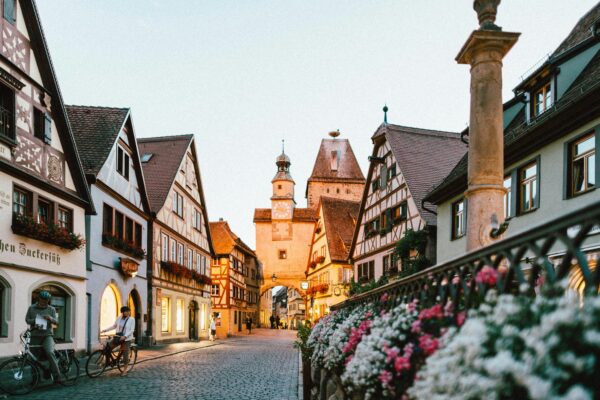
5. Traveling Within Europe on a Budget
Once you’ve reached Europe, the next major challenge is traveling between cities without blowing your budget. Fortunately, Europe boasts an excellent and extensive transportation network that makes it easy to move from one city to another affordably. Whether you’re hopping between countries or exploring a single country, there are various transportation options that can help you keep your travel costs low while ensuring you experience the best Europe has to offer.
One of the most cost-effective ways to travel around Europe is by taking buses. While bus travel may take longer than trains or flights, it’s often significantly cheaper. Companies like FlixBus, Eurolines, and RegioJet offer extensive routes across Europe, connecting major cities and even smaller towns at very affordable prices.
If you book in advance, you can often score tickets for as little as €10-€20, making buses an excellent choice for budget-conscious travelers. Additionally, buses usually have fewer restrictions on luggage compared to budget airlines, making them a more flexible option if you’re traveling with large bags.
Another fantastic way to travel within Europe is by using budget trains. Many European countries have high-speed train networks that are quick, efficient, and comfortable. While trains can be more expensive than buses, they are often cheaper when booked early, especially on routes like Paris to Amsterdam or Berlin to Prague.
Consider purchasing a Eurail pass if you plan to take multiple train journeys. The Eurail Global Pass allows you to travel on most trains across Europe with unlimited travel for a set number of days, which can help you save money if you plan to visit multiple cities. However, it’s important to calculate whether the pass will be cost-effective compared to individual train tickets based on your itinerary.
For those traveling within a single country or a smaller region, regional trains can be a great option. For example, in countries like Italy and Spain, regional trains connect smaller towns and cities, and these tickets tend to be much cheaper than high-speed or international trains.
If you’re exploring a particular region, regional trains offer a convenient and affordable way to get around. Make sure to check local train schedules and promotions, as many countries offer discounted fares for students or senior citizens.
If you’re traveling between cities within a particular region, consider budget airlines for short flights. European budget carriers like Ryanair, EasyJet, and Wizz Air offer affordable flights across the continent, sometimes for as little as €10-€30, if booked in advance.
While the flight time may be short, don’t forget to account for additional fees such as baggage and seat selection, which can quickly add up. Be strategic with your packing to avoid paying for checked baggage, and opt for a small carry-on to keep costs down. Booking flights early and traveling at less popular times can also help you score the lowest prices.
In addition to buses and trains, Europe has an excellent public transportation system within cities. Trams, buses, and metros are affordable and efficient ways to get around once you’ve arrived in a city. Most European cities, like Paris, Berlin, and Prague, offer day passes or multi-ride tickets, which allow unlimited travel on public transport for a set period. These passes can save you money if you plan to use public transport multiple times during your visit. Also, using city transport apps can help you navigate the local transport systems more easily.
When traveling between cities, consider using carpooling services like BlaBlaCar. Carpooling is an affordable and social way to get from one destination to another. By sharing a ride with others, you can reduce transportation costs and make new friends along the way.
BlaBlaCar is a popular service across Europe, offering affordable rides between major cities and towns. It’s particularly useful for long-distance travel in countries like France, Spain, and Germany. Carpooling allows you to experience a more relaxed and scenic journey while saving money on transportation.
For those who prefer to explore at their own pace, renting a car can be an affordable option for your Europe trip, especially if you’re traveling in a group or with a partner. Rental cars can be cost-effective if booked in advance, and they give you the flexibility to explore off-the-beaten-path destinations. However, be mindful of fuel costs, parking fees, and tolls, which can add up. Make sure to check for any additional charges and compare rental prices across various platforms before booking.
Lastly, consider walking or cycling when exploring cities. Many European cities, like Amsterdam, Copenhagen, and Berlin, are incredibly bike-friendly and offer affordable bike rentals. Walking and cycling are not only budget-friendly options, but they also allow you to immerse yourself in the local atmosphere and discover hidden gems that you might miss while using other modes of transport. Many cities offer free walking tours, which are an excellent way to learn about the city’s history, culture, and landmarks without spending much.
By utilizing a combination of buses, budget trains, budget airlines, carpooling, and public transportation, you can travel across Europe affordably and efficiently. The key is to plan your routes in advance, book tickets early, and remain flexible with your travel dates and modes of transport. This way, you’ll be able to explore multiple cities within your 7-day Europe trip while staying well within your ₹1 lakh budget.

6. Money-Saving Tips for Shopping in Europe
Shopping in Europe is one of the joys of traveling, as the continent is home to a variety of unique and high-quality products, from fashion and jewelry to handcrafted goods and local specialties. However, it’s important to know how to shop smart to avoid overspending, especially when you’re working with a budget of ₹1 lakh for your 7-day Europe trip. Fortunately, there are many ways to save money while indulging in a little retail therapy during your European vacation.
One of the best ways to shop on a budget in Europe is by taking advantage of outlet malls and discount stores. Many countries in Europe have outlet shopping centers where you can find designer brands and high-quality goods at discounted prices.
Places like the McArthurGlen Designer Outlets in Italy, the La Vallée Village near Paris, and the Fidenza Village near Milan offer discounted luxury brands, often at 30-70% off retail prices. While outlet shopping isn’t always as cheap as buying from a local market, it’s still a great way to score quality products at a lower price. These outlets are usually located a little outside city centers, so be sure to check public transport options to get there affordably.
If you’re not interested in high-end designer goods, but you want to find unique and local souvenirs, local markets are the best place to go. European cities are famous for their street markets, which are fantastic for picking up handmade products, local art, clothing, and food.
Markets like the Camden Market in London, the Mercado de San Miguel in Madrid, or the Naschmarkt in Vienna offer an authentic shopping experience. Not only will you find unique products, but you’ll also be able to haggle for better prices, especially in less touristy areas. It’s always a good idea to walk through different stalls before committing to a purchase so you can compare prices and choose the best deal.
When shopping in Europe, remember that local stores and independent boutiques often have more reasonable prices compared to larger, more commercial chain stores. Explore neighborhoods that are not near major tourist attractions or shopping streets.
Often, you’ll discover hidden gems where you can find unique items at better prices. In cities like Paris, Barcelona, and Berlin, exploring local neighborhoods like Le Marais in Paris or El Raval in Barcelona will reveal a wide range of artisanal products, handmade jewelry, and vintage fashion at much lower prices than the crowded shopping districts.
Tax-free shopping is another great way to save money on shopping in Europe. Many European countries participate in the VAT (Value Added Tax) refund scheme for non-EU residents, which allows you to get a refund on a portion of the sales tax when you shop in stores that offer tax-free shopping.
To qualify for a VAT refund, make sure to keep your receipts and ask for a tax-free shopping form at the time of purchase. You’ll need to show these forms at the airport when leaving the EU to receive your refund, which can be processed as cash or a credit to your card. This is an excellent way to reduce the cost of your shopping spree.
If you’re on the lookout for fashionable European clothing, it’s worth noting that many cities have excellent second-hand stores and thrift shops. European thrift stores are known for offering gently used clothing at a fraction of the cost of new items.
In cities like London, Berlin, and Vienna, you’ll find a wealth of high-quality second-hand shops where you can pick up stylish clothes, shoes, and accessories for a much lower price than buying new. Vintage shops in places like Paris and Milan are also popular for their unique selection of retro clothing, handbags, and jewelry, giving you the chance to snag something truly special.
Another tip for saving money while shopping in Europe is to take advantage of sales seasons. Europe has two major sales seasons: the winter sales (usually starting in January) and the summer sales (beginning in late June or early July). During these times, many shops and boutiques offer substantial discounts on a wide range of products.
It’s important to plan your trip around these sales if shopping is one of your main priorities, as you can find excellent deals on everything from clothing to accessories, electronics, and home goods. Just keep in mind that some items might still be relatively expensive, even during sales, so don’t be swayed by the allure of discounts—stick to your budget!
For smaller purchases like cosmetics, chocolates, and other local goods, supermarkets and convenience stores often offer better prices than specialty shops or tourist-focused stores. Supermarkets, such as Carrefour in France, Tesco in the UK, or Lidl in Germany, offer a wide variety of locally produced goods at very affordable prices.
You can stock up on snacks, souvenirs, and local delicacies like Swiss chocolate or Italian olive oil without spending a fortune. Shopping in these stores also allows you to try products that are popular in the region but might not be available back home.
Lastly, avoid shopping in high-traffic tourist areas where prices are inflated. Tourist hotspots like the Champs-Élysées in Paris, Times Square in New York, or Piazza San Marco in Venice often have shops that cater to tourists with high markups.
Instead, head to less touristy neighborhoods where locals shop and prices are much more reasonable. This approach not only saves you money but also helps you experience the more authentic side of the cities you’re visiting.
By keeping these money-saving shopping tips in mind, you can enjoy a fulfilling shopping experience in Europe without stretching your budget too far. Whether it’s finding great deals at outlet malls, discovering local treasures in markets, or shopping smartly during sales seasons, there are plenty of ways to make your European shopping spree both enjoyable and affordable.
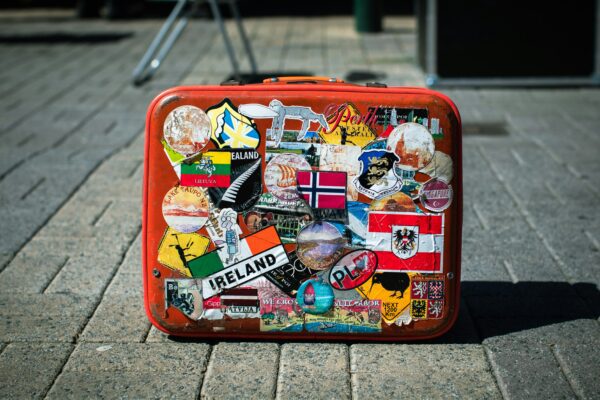
7. Packing Tips to Save Money While Traveling in Europe
Packing smartly is one of the most effective ways to save money during your 7-day Europe trip. When traveling on a budget, the goal is to minimize your expenses without compromising on comfort or convenience. From avoiding excess baggage fees to ensuring that you have everything you need without overpacking, the right packing strategies can make a significant difference in your travel costs. Here are some essential packing tips to help you save money while exploring Europe.
One of the first things you should consider for your Europe trip is how to pack light. European budget airlines and trains often have strict baggage policies, and extra bags or overweight luggage can result in expensive fees. To avoid this, aim to pack only the essentials in a carry-on-sized bag. A well-packed carry-on can be all you need for a 7-day trip if you plan ahead.
Focus on versatile clothing items that can be mixed and matched, and make sure to pack light layers that can easily be added or removed depending on the weather. Lightweight clothing, like a few t-shirts, a sweater, and comfortable jeans, can easily be dressed up or down, ensuring that you have enough outfits without taking up too much space.
When packing for a Europe trip, it’s important to bring clothing that suits the local climate, but you don’t need to pack an entire wardrobe. Europe’s weather can vary greatly depending on the region and the time of year. In Northern and Central Europe, temperatures can be cooler, so you may need a jacket and layers.
In Southern Europe, like Spain and Italy, the weather tends to be warmer, so lightweight clothing and comfortable shoes will be sufficient. To avoid overpacking, check the weather forecast for the cities you’ll be visiting and only bring what you need for each destination. Remember that Europe has many shopping malls and stores, so if you forget an item, it’s easy to pick up something locally.
Footwear is an important consideration for travelers exploring Europe on foot. If you plan to do a lot of sightseeing, walking, or using public transport, comfortable, sturdy shoes are a must. However, this doesn’t mean you need to pack multiple pairs of shoes.
One pair of versatile, comfortable walking shoes should suffice, especially if you choose shoes that can be worn both during the day for sightseeing and in the evening for casual dinners or outings. Opt for shoes that are lightweight and waterproof if you’ll be walking in areas with unpredictable weather. Packing just one pair of shoes will save you space in your bag and avoid additional fees from checking in extra luggage.
Another way to save money while packing is to bring your own toiletries and personal care items. Many budget airlines charge high fees for checked luggage, and even if you manage to avoid these fees, purchasing toiletries in European airports or tourist hotspots can be expensive.
Instead of buying expensive toiletries at the airport or once you’ve arrived, pack travel-sized versions of your essentials, such as shampoo, conditioner, toothpaste, and body wash. Keep in mind the 100ml rule for liquids when packing in a carry-on, and store your toiletries in leak-proof, clear containers. You can also purchase reusable travel containers for liquids, which will help you save money in the long run.
A travel adapter is another must-have item when traveling in Europe. European countries use different electrical outlets and voltages than those in India. Without an adapter, you won’t be able to charge your electronics, which could be a significant inconvenience.
While you can buy a travel adapter once you’re in Europe, it’s usually cheaper and more convenient to bring one with you. A universal travel adapter will allow you to charge your devices in any country, ensuring that you don’t have to spend unnecessary money on an item that’s readily available for a reasonable price back home.
In addition to packing light, it’s important to organize your belongings in a way that maximizes your carry-on bag’s space. Using packing cubes or compression bags can help you fit more clothes into a smaller space and keep everything organized.
Compression bags are particularly useful for bulky items like jackets or sweaters, as they can reduce their size and save you room in your bag. Packing cubes also help you stay organized, making it easy to locate items in your bag without having to dig through everything. The more organized you are, the less likely you are to pack unnecessary items, saving both space and money.
A reusable water bottle is an item that might not seem essential at first, but it can actually help you save a significant amount of money during your trip. In many European cities, tap water is safe to drink, so bringing a refillable water bottle with you will allow you to avoid buying bottled water, which can be expensive.
Many airports, train stations, and public spaces in Europe also offer free water refill stations. Carrying your own water bottle not only saves money but is also more eco-friendly, reducing the need for single-use plastic bottles.
Don’t forget to pack any necessary travel documents, such as your passport, visa (if applicable), travel insurance, and tickets. Keep these items in a secure, easy-to-access location like a travel wallet or a money belt.
Losing important documents while traveling can lead to unnecessary expenses and stress, so it’s worth investing in a secure system to keep everything safe. For safety and convenience, make photocopies of your important documents and store them separately from the originals, just in case something goes wrong during your Europe trip.
By packing light, bringing the essentials, and organizing your belongings efficiently, you can save money and avoid unnecessary baggage fees during your Europe trip. Additionally, packing with intention and smartly planning ahead will allow you to focus on enjoying your travels and experiencing Europe without the stress of excess baggage or missing items.

8. Final Tips and Tricks to Maximize Your Budget
As you near the end of planning your 7-day Europe trip under ₹1 lakh, there are still a few final tips and tricks that can help you make the most of your budget while ensuring you get the best travel experience possible. These additional strategies focus on smart decision-making, flexibility, and efficiency, all of which are key to a successful and affordable European adventure.
One of the most effective ways to stretch your budget is by being flexible with your travel dates. Flight prices can fluctuate significantly depending on the time of year, day of the week, and even the time of day. If you have the flexibility to adjust your travel dates by a few days, you may be able to find much cheaper flights.
Generally, flying mid-week (Tuesday, Wednesday, or Thursday) tends to be cheaper than flying on weekends. Additionally, booking flights during off-peak travel seasons, such as the early spring or fall, can save you a significant amount of money compared to peak tourist months like summer. Keep an eye on flight comparison websites and set up price alerts to catch the best deals.
Booking accommodation early is another critical money-saving strategy. In high-demand European cities, hotels and Airbnb prices can skyrocket the closer you get to your travel dates. To secure the best deals, start looking for accommodation as soon as you finalize your itinerary.
Websites like Booking.com, Airbnb, and Hostelworld offer a wide variety of options at different price points, ranging from budget hostels to mid-range hotels. Don’t forget to check reviews and ratings to ensure that the accommodations are comfortable, safe, and conveniently located. Booking in advance not only guarantees you a spot but also ensures you get the best possible price.
If you’re really looking to save money on accommodation, consider staying in hostels or guesthouses. Hostels have come a long way in recent years, offering clean, comfortable rooms with plenty of amenities. Many hostels in Europe also have kitchens where you can cook your own meals, which helps you save even more money on food.
Plus, hostels often provide opportunities to meet fellow travelers, making them a great way to connect with people from all over the world. Guesthouses, which are small, family-run accommodations, also tend to be more affordable than larger hotels while offering a more authentic local experience.
When exploring Europe on a budget, purchasing city passes or tourist cards can help you save money on sightseeing. Many European cities offer passes that provide discounted or even free entry to major attractions, museums, and public transportation.
For example, the Paris Pass gives you access to over 60 attractions, including the Louvre Museum and Eiffel Tower, while also covering your public transport costs. Similarly, the Vienna City Card offers discounts to museums and free travel on public transportation. These cards are particularly beneficial if you plan on visiting multiple attractions in a single city. However, before purchasing a city pass, make sure to compare the cost of the pass with the individual entry fees for attractions to ensure it’s worth the investment.
Speaking of sightseeing, another tip to maximize your budget is to prioritize free or low-cost activities. While Europe is full of world-renowned museums and historical landmarks, you don’t have to spend a fortune on entrance fees to experience the best the continent has to offer.
Many cities have free walking tours, which are a great way to explore the city while learning about its history and culture. Some museums also offer free entry on certain days of the week or during specific hours, so check the schedules in advance. In addition, many cities have beautiful parks, gardens, and public squares where you can relax, take a stroll, and enjoy the local atmosphere without spending a cent.
Another great way to stretch your travel budget is by eating like a local. While dining out in Europe can be expensive, there are plenty of affordable options if you know where to look. Skip the tourist traps near popular landmarks and instead opt for local cafés, bakeries, or street food vendors, which often offer delicious meals at a fraction of the price.
Street food in Europe is diverse and delicious, with options like crepes in Paris, bratwurst in Berlin, and pizza slices in Italy. Many European cities also have food markets, where you can sample local delicacies and purchase fresh, affordable ingredients to cook your own meals. Shopping for groceries and preparing simple meals in your accommodation can also save you a lot of money.
Consider traveling overnight to save on both transportation and accommodation costs. Overnight buses and trains are common in Europe and offer a convenient way to get from one city to another while avoiding the expense of a night’s stay in a hotel.
For example, traveling on an overnight train from Prague to Budapest will not only save you the cost of a hotel room but also allow you to wake up in your next destination ready to start your day of exploration. If you’re traveling on a tight schedule or budget, overnight travel can be a great option to maximize your time and money.
Finally, always carry a small emergency fund and a credit card with no foreign transaction fees. While Europe is generally safe, it’s always good to have a financial cushion in case of unexpected emergencies or situations.
A credit card with no foreign transaction fees will help you avoid extra charges when paying for goods and services in Europe, allowing you to use your card safely without incurring additional costs. Having cash on hand is also important, especially in smaller towns or markets where credit cards might not be accepted. Just make sure to exchange your currency in advance to avoid unfavorable exchange rates at airports or tourist locations.
By incorporating these final tips and tricks into your travel plans, you can maximize your budget and enjoy a fulfilling European vacation without breaking the bank. Smart planning, flexible decisions, and strategic savings can help you make the most of your 7-day Europe trip under ₹1 lakh, leaving you with unforgettable memories and experiences.
Frequently Asked Questions
1. Can I really visit Europe for 7 days under ₹1 lakh?
Yes, it’s possible to plan a 7-day Europe trip for under ₹1 lakh by selecting budget-friendly countries, booking affordable flights, staying in hostels or guesthouses, and focusing on free or low-cost activities. By following smart budgeting strategies and being flexible, you can make the most of your trip while keeping costs down.
2. Which countries in Europe are the cheapest to visit?
Central and Eastern European countries like Hungary, Poland, the Czech Republic, and Slovakia are some of the most affordable destinations. These countries offer rich cultural experiences, stunning architecture, and delicious food at a fraction of the cost compared to Western Europe.
3. How can I find affordable flights to Europe from India?
To find the best flight deals, consider booking in advance, flying mid-week (Tuesday, Wednesday, or Thursday), and traveling during off-peak seasons (early spring or fall). Use flight comparison websites like Skyscanner or Google Flights, and set up price alerts to catch the lowest prices.
4. What is the best way to travel within Europe on a budget?
The best way to travel on a budget in Europe is by using trains, buses, and budget airlines like Ryanair and EasyJet. Many cities also offer affordable public transportation passes. For longer distances, consider traveling overnight by bus or train to save on accommodation costs.
5. Is it safe to travel to Eastern Europe as a solo traveler?
Yes, Eastern Europe is generally safe for solo travelers. Countries like Poland, Hungary, and the Czech Republic have low crime rates and are increasingly welcoming to tourists. However, like any destination, it’s important to stay alert, keep your belongings secure, and follow general safety advice.
6. How can I save money on food while traveling in Europe?
Eating like a local is one of the best ways to save money on food in Europe. Opt for local cafés, street food, or food markets instead of touristy restaurants. You can also buy groceries and cook simple meals if your accommodation has a kitchen.
7. What are some free things to do in Europe?
Many European cities offer free walking tours, museum entry during specific hours, and free access to parks, gardens, and public spaces. Some landmarks, like the Berlin Wall or the Charles Bridge in Prague, are also free to visit. Research each city for free attractions.
8. How can I reduce accommodation costs in Europe?
To save money on accommodation, consider staying in hostels, guesthouses, or Airbnb. Booking in advance helps secure the best deals. Many hostels also offer kitchens where you can cook your own meals, saving you money on food.
9. Should I buy travel insurance for my Europe trip?
Yes, travel insurance is a good idea for your Europe trip. It provides coverage in case of unexpected events like medical emergencies, lost luggage, or trip cancellations. Make sure to choose a plan that includes coverage for healthcare and trip disruptions.
10. What are some tips to save money on sightseeing in Europe?
Look for city passes that offer discounted or free entry to multiple attractions. Many cities have free walking tours and offer free access to museums or attractions on certain days of the week. Prioritize low-cost activities like exploring parks or visiting free landmarks.




1 comment. Leave new
[…] of the best parts about Europe trip is trying the food! Here are some tasty dishes you can […]